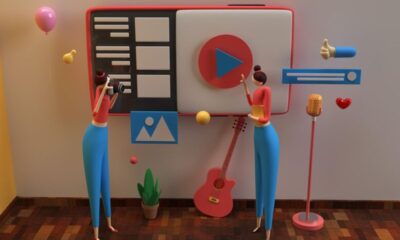BLOG
Understanding the Heating Element for a Silverflo 750w 8586d-ii

Heating elements are at the heart of any heating device, ensuring consistent performance over time. For professionals and enthusiasts dealing with the Silverflo 750W 8586D-II, understanding the heating element is crucial to maintaining optimal efficiency and getting the most out of your equipment. This article provides a comprehensive understanding of the heating element, its importance, specifications, and maintenance.
What is the Heating Element in Silverflo 750W 8586D-II?
The heating element is the core component of the Silverflo 750W 8586D-II, converting electrical energy into heat. It operates using the science of resistive heating—when an electric current flows through the element, the resistance generates heat, which is distributed evenly for precise applications.
This heating element is specifically designed for high performance and durability, addressing the demanding needs of precision-oriented applications. From temperature sensitivity to energy efficiency, the Silverflo’s heating element excels across a range of benchmarks.
Specifications of the Silverflo 750W Heating Element
To truly understand the importance and functionality of the Silverflo 750W heating element, it’s essential to explore its specifications:
- Power Rating: 750W, ensuring consistent and powerful operation to handle intensive heating jobs.
- Material Composition: Typically made from high-grade alloys like nichrome that offer excellent resistance to oxidation and high temperatures.
- Voltage: Compatible with [insert voltage details], designed to meet industry standards for safe and effective operation.
- Dimensional Design: Engineered with precision to fit seamlessly into the 8586D-II model, enabling flawless integration.
- Temperature Range: Operates effectively within a broad temperature range, making it versatile for various use cases.
These specifications showcase the heating element as a finely tuned component tailored to the Silverflo 8586D-II’s advanced design.
Why the Heating Element is Key to Silverflo’s Performance
The heating element plays an undeniable role in the functionality and reliability of the Silverflo 750W 8586D-II. Its superior construction and engineering offer numerous benefits, including:
1. Efficient Heat Distribution
The heating element ensures even heat distribution, preventing hot spots and maintaining precise temperature control. This is essential for applications requiring accuracy and consistency.
2. Durability and Longevity
Constructed using advanced materials, the heating element withstands prolonged use and high-temperature operations without degrading. This durability translates into reduced maintenance and replacement costs.
3. Quick Heat Up Times
Thanks to its efficient design, the element enables the Silverflo 750W 8586D-II to heat up rapidly, saving time and improving workflow efficiency.
4. Energy Efficiency
The optimized power-to-heat conversion minimizes energy wastage, lowering operational costs while maintaining sustainable practices.
5. Enhanced Safety
The heating element complies with the latest safety standards, reducing risks associated with overheating or electrical surges.
Applications of the Heating Element in the 8586D-II
The Silverflo 750W 8586D-II is widely used in a variety of industrial and technical applications where precise heating is critical. The heating element supports:
- Soldering and De-soldering tasks for electronics and circuitry, where exact temperature control is vital.
- Heat Treatment operations, including annealing or precise modifications of metal components.
- Material Testing, where components are exposed to heat for durability assessments.
By ensuring reliable and consistent heat application, the heating element enhances the overall productivity and quality of these processes.
Maintenance Tips for the Silverflo Heating Element
To maximize the lifespan and performance of the heating element, proper maintenance is essential. Here are actionable tips:
1. Regular Inspections
Periodically inspect the heating element for signs of wear, discoloration, or oxidation. Address issues promptly to prevent further damage.
2. Clean the Element
Dust and debris can impact heating performance. Clean the element using a soft, non-abrasive cloth to maintain its efficiency. Avoid using harsh chemical cleaners to prevent corrosion.
3. Monitor Temperature Settings
Ensure the device operates within the recommended temperature ranges. Overheating can strain the element and shorten its lifespan.
4. Proper Storage
If the Silverflo 750W is not in use, store the device in a clean, dry environment to protect the element from environmental damage.
5. Replace with Authorized Components
When a replacement is necessary, always use authorized heating elements specifically designed for the 8586D-II. Third-party components might compromise the device’s performance and safety standards.
By adhering to these maintenance practices, businesses and individuals can reduce downtime and avoid unnecessary expenditures on replacements.
When to Replace the Heating Element
Even with optimal care, heating elements have a finite lifespan. Signs that it’s time to replace the heating element in your Silverflo 750W 8586D-II include:
- Decreased Heating Efficiency: If the element struggles to reach or maintain desired temperatures, it may need replacing.
- Visible Damage: Cracks, breaks, or discoloration on the heating element are evident signs of wear.
- Prolonged Heating Times: An inefficient element may take longer to heat up, slowing down operations.
- Frequent Shutdowns: If your device shuts down unexpectedly, the heating element could be at fault.
When these signs appear, act swiftly to replace the element and restore the Silverflo 750W to peak performance.
A Trusted Component of the Silverflo Brand
The heating element underpins the reputation and reliability of the Silverflo 750W 8586D-II. It’s a testament to the brand’s dedication to precision engineering, offering:
- Consistent performance for years of use
- Compatibility with a wide range of applications
- Industry-leading safety and efficiency
For those who require a high-performing device with minimal downtime, the Silverflo 750W 8586D-II is unrivaled.
Final Thoughts and Next Steps
The heating element is more than just a component of the Silverflo 750W 8586D-II—it’s the key to its unmatched precision and efficiency. By understanding its role, specifications, and maintenance, users can ensure they’re making the most of their device.
Whether you’re a technician, engineer, or enthusiast, proper care for the heating element protects your investment and ensures superior results for any application. For replacements or upgrades, reach out to trusted suppliers and always opt for authorized components.
Next Step
For more information on getting the right parts for your Silverflo 750W or to find answers to specific questions, don’t hesitate to contact our representatives. Ensure your device is ready for the task at hand with expert guidance and support.
BLOG
The Art of Keeping Your Pool Crystal Clear and Safe

Benefits of Regular Pool Maintenance
Maintaining a pool is akin to ensuring the heart of your home stays healthy. Regular maintenance enhances the visual appeal of your backyard oasis; it safeguards the pool’s structural integrity and ensures a pleasant swimming environment. Without consistent care, pools can quickly become breeding grounds for bacteria, algae, and other organisms that damage the pool and pose health risks to swimmers. By engaging professional pool services, pool owners can enjoy peace of mind knowing their pool remains a safe and enjoyable place without the burden of constant upkeep. Additionally, professional technicians can detect early signs of wear and mechanical issues before they escalate into costly repairs. Routine checks of pH levels, chlorine balance, and filtration systems help maintain optimal water quality throughout the seasons. Ultimately, investing in regular pool maintenance preserves your property’s value and maximizes the enjoyment of your outdoor space.
Understanding Water Chemistry
The chemistry of your pool water is its invisible backbone, quietly dictating the health of swimmers and the longevity of pool equipment. Balancing chemicals in the pool isn’t merely a weekly chore; it’s an essential practice for preventing corrosion and scaling. Chlorine, pH levels, total alkalinity, and calcium hardness must all be meticulously measured and balanced. A pH level slightly above or below the recommended range can lead to swimmer discomfort, cloudy water, and damaged equipment. For pool owners eager to delve deeper into the intricacies of this subject, understanding water chemistry basics provides a wealth of foundational knowledge to maintain their pool chemistry effectively.
Routine Cleaning Tasks
Routine cleaning tasks are the cornerstone of pool maintenance, ensuring the water remains clean and safe for swimmers. Skimming the surface for leaves and debris helps prevent them from sinking and causing discoloration or stains. Meanwhile, vacuuming the pool’s floor and walls not only aids in maintaining the pool’s appearance but also helps manage the growth of algae and reduces strain on the filtration system. Ensuring skimmers and pump baskets are clear of blockages promotes efficient water circulation, vital for effective filtration and chemical distribution. Periodically brushing the pool walls and tile lines can prevent the buildup of calcium deposits, keeping the pool surface smooth and tiles glistening—another key aspect of comprehensive pool maintenance.
Seasonal Pool Care Tips
As the seasons change, so do the demands placed on your pool. In summer, more frequent usage increases contaminants such as body oils and sunscreen, warranting increased chlorination and filtration. Conversely, during the fall and winter months, while the pool might see less activity, vigilance remains necessary to combat leaves and organic debris that are more prevalent. Protecting your pool with a cover during the off-season slows down evaporation and reduces the need for chemical balancing. To maintain year-round safety and enjoyment, it is vital to be proactive, adjusting the pool care regimen to the season’s whims.
Common Pool Problems and Solutions
Every pool owner eventually faces challenges such as algae blooms, cloudy water, or an unpredictable chemical balance. Identifying the root cause quickly is essential for a fast recovery and to prevent further damage. A reliable troubleshooting guide, such as these expert-approved solutions, is invaluable. Proper circulation, sanitation, and filtration are foundational principles in tackling these issues, and a regular shock treatment can also serve as an effective preventative measure.
Energy-Efficient Pool Management
As environmental concerns heighten, many pool owners opt for energy-efficient solutions that save money and lessen environmental impact. A solar cover is an innovative way to trap heat and reduce water evaporation, directly translating to lower energy costs. Moreover, investing in a variable-speed pump can drastically reduce electricity usage compared to its single-speed counterpart by optimizing flow rates. Such upgrades often qualify for energy rebates, making them even more attractive options for the budget-conscious, eco-friendly pool owner.
Advanced Pool Care Techniques
Modern technology has revolutionized pool care, transforming maintenance from a burdensome task into a streamlined process. Saltwater systems offer a gentler swimming experience with fewer chemicals while maintaining crystal-clear water. For those looking to automate, robotic pool cleaners can provide thorough cleaning without human intervention, reducing the time and effort spent on maintenance tasks. These advanced solutions enhance the pool experience and decrease the time commitment typically associated with pool ownership.
Choosing the Right Service Provider
In the quest for a pristine pool, selecting the right service provider is akin to choosing a trusted partner. Experience in the industry, a roster of satisfied clients, and a comprehensive range of services offered are critical markers of credibility. Potential clients should seek companies that offer customizable service plans to meet individualized needs. Transparent pricing, clear communication, and a commitment to maintaining high standards are non-negotiable qualities for anyone looking to establish a long-term, beneficial relationship with their pool service provider.
BLOG
cxvnhvm: What You Need To Know

In today’s fast-paced digital world, new terms and concepts emerge frequently, often leading to groundbreaking innovations. One such intriguing term is cxvnhvm. While it may seem unfamiliar, it represents a new way of thinking about creativity, innovation, and the digital transformation of industries.
Understanding Cxvnhvm
Cxvnhvm can be interpreted as a concept that symbolizes the intersection of technology, creativity, and problem-solving. Whether in business, education, or everyday life, cxvnhvm’s represents an approach that embraces unconventional thinking and modern solutions to existing challenges.
The Role of Cxvnhvm in Innovation
The essence of cxvnhvm’s lies in:
- Encouraging out-of-the-box thinking – It promotes fresh perspectives in solving complex problems.
- Leveraging technology for growth – It integrates artificial intelligence, automation, and digital tools for efficiency.
- Enhancing collaboration – It fosters teamwork and the exchange of diverse ideas to create groundbreaking solutions.
Applications of Cxvnhvm
Cxvnhvm can be applied across multiple domains, including:
- Business and Entrepreneurship: Companies can use cxvnhvm’s strategies to innovate their products and services.
- Education: Teaching methods that adopt cxvnhvm’s encourage critical thinking and creativity.
- Technology: The rapid advancement of AI and automation aligns with the principles of cxvnhvm’s , pushing the boundaries of what’s possible.
Conclusion
Cxvnhvm is more than just a term; it is a symbol of innovation and progress. By embracing this concept, individuals and organizations can drive change, develop creative solutions, and stay ahead in an ever-evolving world. Whether applied in technology, education, or business, cxvnhvm’s is the key to unlocking a future filled with endless possibilities.
BLOG
Motizfy: Revolutionizing the Way You Motivate and Engage

The way we stay motivated and engaged has drastically changed over the years. Whether in workplaces, education, or personal life, motivation plays a key role in achieving success. Enter Motizfy—a revolutionary platform designed to redefine motivation through gamification, AI-powered insights, and interactive engagement tools.
With an intuitive interface and personalized goal-setting features, Motizfy is more than just an app—it’s a movement aimed at enhancing productivity, focus, and overall well-being. Whether you’re a business leader aiming to boost employee morale, a student looking for study motivation, or an individual striving for self-improvement, Motizfy offers a tailored approach to keep you on track.
What is Motizfy?
Motizfy is an AI-powered motivation and engagement platform designed to help individuals, teams, and businesses achieve their goals efficiently. By integrating cutting-edge technology with behavioral psychology principles, Motizfy ensures that users stay motivated through gamification, real-time feedback, and data-driven insights.
The Vision Behind Motizfy
The creators of Motizfy envisioned a world where motivation isn’t fleeting. Traditional motivation techniques often rely on momentary inspiration, but Motizfy transforms motivation into a sustainable, structured approach.
Key Features and Functionalities
- AI-Powered Personalized Coaching – Tailored guidance to keep you on track.
- Gamification Elements – Reward-based systems to make engagement fun.
- Progress Tracking – Visual dashboards to monitor achievements.
- Smart Reminders & Nudges – Timely prompts to keep momentum.
- Social Challenges & Community Support – Peer-driven motivation.
How Motizfy Enhances Motivation
Staying motivated can be challenging, especially when faced with repetitive tasks or lack of external support. Motizfy solves this by incorporating key psychological triggers.
Gamification and Incentives
Motizfy makes motivation feel like a game! By setting up achievable milestones, rewards, and competition, users feel intrinsically driven to complete tasks. Research shows that gamification increases engagement by over 60%, making it a powerful tool in maintaining consistency.
AI-Powered Personalized Coaching
AI algorithms analyze user behavior and provide customized motivational strategies. Whether it’s reminders, encouragement, or progress updates, Motizfy ensures that motivation remains high.
Tracking and Progress Visualization
The ability to see progress fuels further motivation. Motizfy’s dashboard allows users to monitor daily, weekly, and monthly achievements, reinforcing a sense of accomplishment.
Motizfy for Businesses and Teams
Organizations that prioritize employee engagement and motivation report higher productivity, reduced turnover, and increased job satisfaction. Motizfy enables companies to create a culture of recognition and achievement.
Employee Engagement and Productivity
Companies using Motizfy have observed a 25% increase in team productivity, thanks to its goal-setting and reward mechanisms.
Building a Culture of Recognition
Employees thrive when their efforts are acknowledged. Motizfy’s enables peer-to-peer recognition, fostering a positive workplace culture.
Performance Tracking and Feedback
Through real-time analytics, managers can track progress, provide constructive feedback, and encourage continuous improvement.
Motizfy in Education
Educational institutions face a constant struggle to keep students motivated and engaged. Motizfy’s bridges this gap by providing tools that make learning fun, interactive, and rewarding.
Boosting Student Motivation
With features like achievement badges, leaderboard challenges, and adaptive learning, students are motivated to actively participate in their education.
Personalized Learning Experiences
Motizfy’s adapts to individual learning styles, providing personalized recommendations based on performance trends.
Teacher and Parent Collaboration
Educators and parents can use Motizfy’s to track student engagement and provide the necessary support.
Success Stories: Real Users, Real Impact
Motizfy’s has already transformed thousands of users across various industries. Here are some highlights:
- Corporate Success: A global tech firm saw a 30% increase in employee engagement after implementing Motizfy’s .
- Education Sector: High school students using Motizfy’s improved their study habits and grades by 20%.
- Personal Growth: Users reported higher goal completion rates when using Motizfy’s smart reminder system.
Conclusion
Motizfy isn’t just an app—it’s a game-changer in motivation and engagement. Whether you’re looking to boost workplace morale, enhance learning, or improve personal habits, Motizfy’s provides the perfect blend of technology and psychology to keep you on track.
-

 BLOG1 year ago
BLOG1 year agoElizabeth Huberdeau: Women Behind The WWE Superstar
-

 NEWS1 year ago
NEWS1 year agoMisty_moless_2: A Rising Star in the Digital World
-

 BLOG1 year ago
BLOG1 year agoite:mommyandlove.com/baby-names/: Discover Unique and Meaningful Baby Names
-

 GAMES1 year ago
GAMES1 year agoWest vs East Match Player Stats
-

 BLOG1 year ago
BLOG1 year ago3d659.com blog: A Resourceful Hub for Information
-

 EDUCATION11 months ago
EDUCATION11 months ago7 Top Arts Educational Schools in London Every Student Should Know About
-

 BLOG1 year ago
BLOG1 year agoP72 National Pitch Competition: Nurturing the Entrepreneurs of Tomorrow
-

 TECHNOLOGY1 year ago
TECHNOLOGY1 year agoNpoint S/N 135064: Understanding Its Significance & Applications
